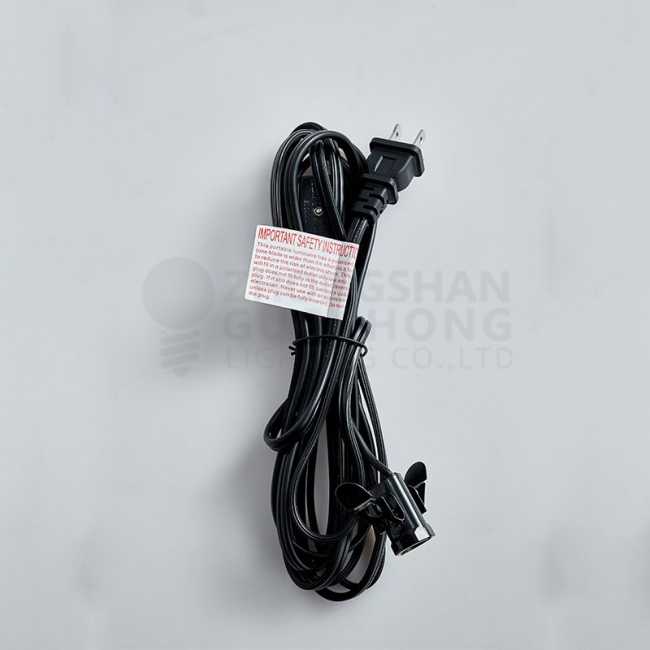Jul. 22, 2020
Extension cords can be used indoors and outdoors to extend your socket range or your equipment. In addition to the color and different plug types, it is easy to assume that most cables are usually the same. However, not all extension cords are the same. So, how do you know if the power cord you are using is correct? In this article, outdoor string light set supplier will discuss what should be paid attention to when choosing the correct extension cord.
Indoor and outdoor
Indoor extension cords have a thin insulating layer (or sheath) around the wires and are not suitable for outdoor use. You can use them with lights, floor fans, Christmas lights, and general electronic devices. Outdoor extension cords are designed with a stronger outer sheath to help them withstand harsher and humid conditions. They are the best choice for large equipment that requires more power, such as tools and air compressors. Outdoor wires are divided into three groups:
Wires that are used occasionally are best for small tools.
Frequently used wires have a heavier load and are a better choice for large tools and equipment.
The sturdy wire is suitable for high-current tools or construction sites.

Please check the label when selecting the next extension cord. Ratings are printed on the sheath of all extension cords. These codes consist of letters and are used to describe the type of sheath and the location of the cable.
For example, suppose that SJTW is printed on a cable you are viewing. This means that this universal wire can also be used outdoors and in humid places. Be sure to double-check what this jacket is made of. Wires with T-labels are made of thermoplastic. Although thermoplastic is waterproof, it is not suitable for long-term outdoor activities because it becomes brittle in cold weather or becomes soft in extremely hot weather. A better option for extended outdoor use is an E-labeled wire. This means that the sheath is made of thermoplastic elastomer rubber (TPE), which is resistant to sunlight, ultraviolet rays, and extreme weather conditions.
Current, gauge and length
The extension cord has a maximum current, and the maximum power (or current) can be safely handled, which can be found on the power cord packaging. Operating equipment that requires a current higher than the rated current of the power cord may cause the power cord to overheat. If you plan to use multiple devices at the same time, you need to add up the current requirements of all devices to ensure that the power cord is not overloaded. If the device is listed in watts, the amperage can be determined using the following formula:
Ampere = Watt/110
Wire gauge is the diameter of the wire. This determines how much current can safely pass through the wire. The wire gauge is measured with American Wire Gauge (AWG) and can be found on the wire sheath and packaging. Lower AWG numbers are called higher meters because they can handle higher amperages. For example, a 16/2 gauge wire has two 16 gauge wires. Each wire can conduct 10 to 13 amps.
The length directly affects the power of the device. The farther and farther the current goes, the greater the resistance encountered, causing the voltage to drop when it reaches the device. It is recommended that you buy the length you need, without too much excess. If you need a longer wire, please purchase a larger gauge wire, such as a 12 or 10 gauge wire, to help eliminate voltage drops. Our company provides by string light with 20m cord.

Copyright © Zhongshan Guochong Lighting Co.,Ltd.All Rights Reserved | Sitemap | Powered by 